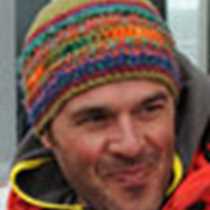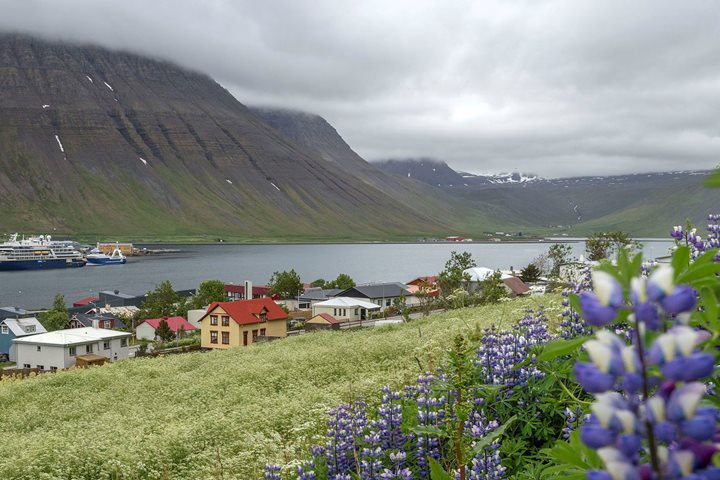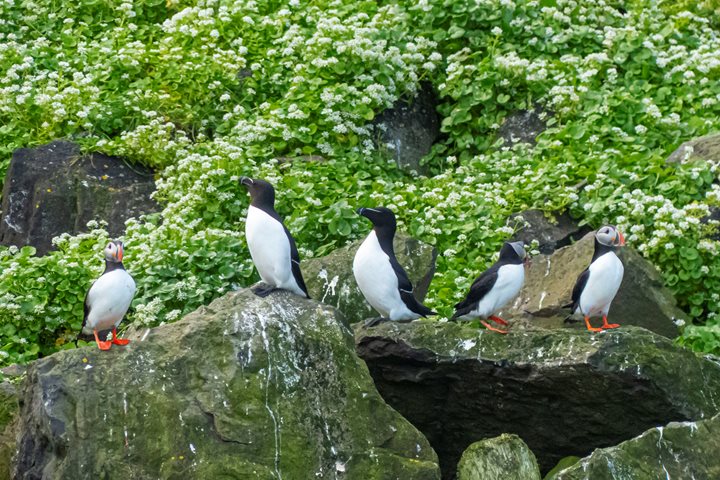After many attempts during the last day and a half to get through the very heavy pack ice towards the coast of Greenland, the call was made last night for National Geographic Explorer to change course and head south towards Iceland. A day at sea is always different than any other day at sea. You never know what can happen or what creature may show up. Some of us always hopeful and early risers, eternally on the lookout for seabirds or marine mammals, were up on the bridge to see yet another early morning and not much happening for a while. But in the afternoon, our course traversed several seamounts, which combined with calm seas allowed perfect conditions for wildlife spotting and attempting once more the picture of Tom’s elusive fulmar. There were much more than hundreds of fulmars out there. Several groups of white-beaked dolphins were seen, some of them bowriding, our first northern gannet a graceful and effortless glider and also some large whales! sei, sperm, and finally, a great presentation by some friendly humpback whales. Lob tailing and flip slapping on the surface these giants seemed to have time to spare and really put up a show for us.
A day at sea also offers the opportunity to reflect on the past days and the many different landscapes and animals we have been experiencing. The amazing adaptations of some of these creatures to a life in the harsh polar regions are among the first things that comes to mind. To a lesser extent, some likely reflected on how our daily life affects lifeforms in these distant lands, even of we don’t notice. Inside National Geographic Explorer it was another day for education and introductions to what awaits us in Iceland starting tomorrow. With the help of lectures and presentations, we covered topics as wide as how to improve our wildlife photos (great tips for tomorrow’s visit to Grimsey Island), the first people on the race to the North Pole, bits we did not know about ice, and another exhilarating presentation from Dennis entitled Sex and the Single Flower.







